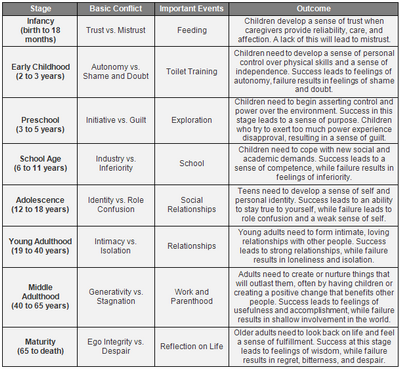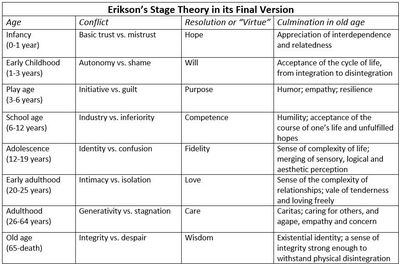The ERIKSON Stages of Development Model Explains Learning Disabilities
The Erichson Stages of Development is an important model for understanding human development.

As articulated in the mid-twentieth century by Erik Eriksen, this model is intended to provide insight into how people develop and interact with each other in a variety of social environments. It was used extensively during the Second World War by psychiatrists and psychologists who were attempting to understand the psychological aspects of the war effort and has been used ever since to better understand how individuals interact with their environments.
This model has proven useful in helping psychologists, educators, politicians, and other professionals understand the developmental process. The concept of this model has been used to explain aspects of personality, intelligence, and other aspects of human behavior.
The ERIKSON Stages of Development model provides insight into how children learn to deal with peers and family relationships. It helps to explain why children are able to learn so quickly and efficiently, despite the fact that they spend more time in the same environment. It also explains why children become bored with the same toys or games.
The model helps to explain how children become interested in science and math in the early stages of their development, how they adapt well to changes in their environment, and how they learn new skills as they progress through the developmental process. The ERIKSON Stages of Development model can help to identify when children are becoming bored with a particular activity, and then can provide them with a new activity. They can also use the model to identify areas where children are not receiving the attention they need. When an individual has a good grasp of these concepts, they can easily teach these concepts to others.
In addition, the model helps explain why children are often able to learn so quickly and effectively, even though they spend more time in the same surroundings. It helps to explain why some children appear to have no learning disabilities, while others struggle to understand the basic concepts they are introduced to.
The model can be helpful in explaining why children tend to develop certain social skills so quickly. One of the primary social skills developed by ERIKSON Stages of Development is the ability to interact with others in a positive way.

This is important because it can be a factor in academic success in school and in life in general.
The model also can help to explain why some children do not seem to have the ability to read or write very well. or to be able to function properly in social situations. It can also help to explain why children seem to be incapable of relating to other people in general, such as when they do not understand why their parents would want them to do something.
The ERIKSON developmental model is also an interesting model to help explain the different areas of interest that different children might choose to pursue, and also the different types of activities that they choose to pursue during their early years. This information can provide insight into the types of activities that will become interests in their adult lives. The model can help parents, teachers, and other professionals understand what the child might be interested in during his or her adulthood. It can also be used to help educators explain why children choose one or two areas in life over another.
The ERIKSON developmental model also provides important insight into the types of experiences children have that could be used to create lifelong skills. For example, if one child is shown how to use a particular skill during a stage, he or she may be able to use the same skill in many different situations. This is a very valuable lesson for a child who could be having difficulties applying this skill in a particular situation.
Finally, this model provides an overview of the five stages that will occur in each of the five stages. It can be helpful to explain how the five stages of development are linked, and how they are related to each other. By understanding these links, a teacher or parent will know which skills are being taught at a stage, and what lessons will be most beneficial for a child who is being trained.
In summary, this model is a great resource for those parents, educators, and teachers who are interested in social skills. and learning disabilities.